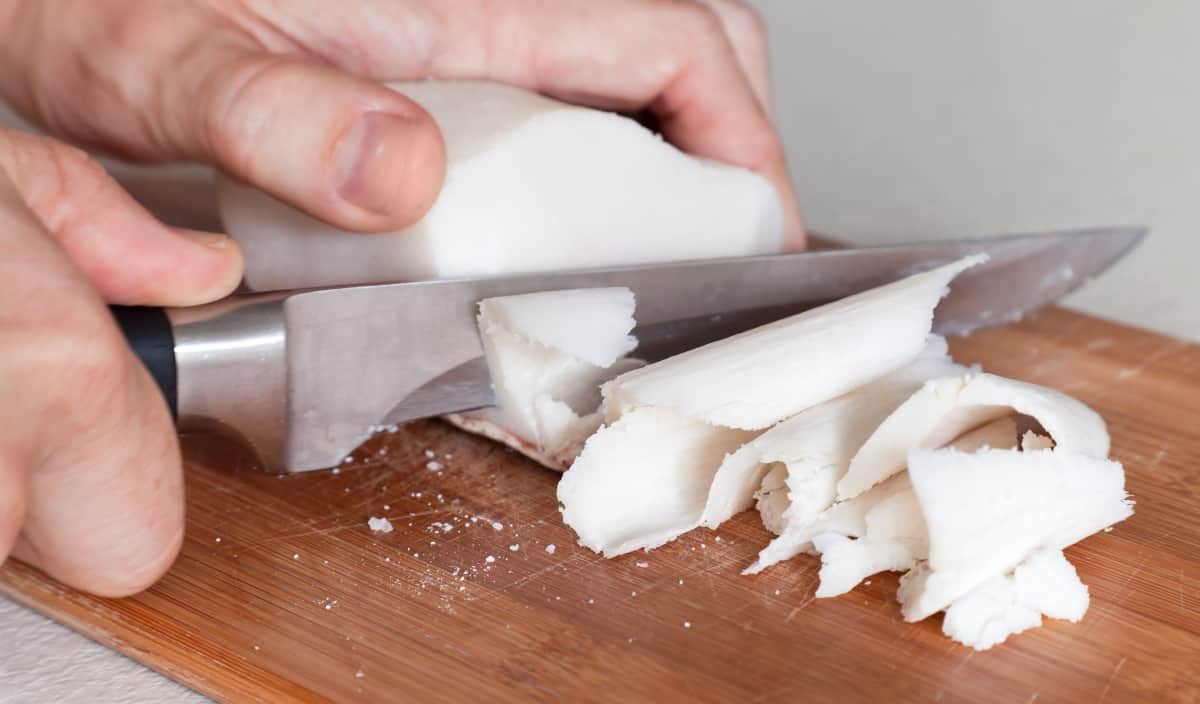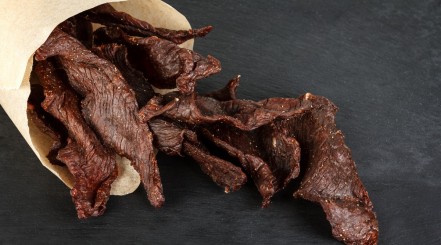
Here’s your complete guide to beef tallow, its many uses, and how to make your own.
If you’ve ever been to a historical re-enactment village or read a Victorian-era novel, you’ve probably come across the word “tallow.” Unlike other terms of the day, though, like bricky, podsnappery, and arfarfan’arf, this one still has relevance.
Obviously, tallow is a term related to cooking. But what is tallow, and why should you care about it?
I’m going to explain what this magical semi-solid is and how to use it to not only add terrific flavor to your cooking but also save money in the process. Finally, I’ll share the simple method for making beef tallow in your own kitchen with the simplest tools.
Stay with me, friends, to learn why tallow may change the way you cook, or at least how you look at your fatty trimmings. You’ll be one afternoonified griller when we’re done.
(Yes, I’ll share all the definitions at the end!)
Jump to:
What is Beef Tallow?
Tallow is an old word (14th century) for hardened animal fat.
Beef tallow, specifically, is beef fat that’s rendered (cooked down), filtered, and allowed to harden. The finished product is thick with a wax-like consistency.
I personally like to make it in a batch, from saved up beef fat that comes mostly from trimming briskets. But I freeze and save any trimmings I take from any number of different beef cuts for the job.
What Does Beef Tallow Taste Like?
You’d be forgiven for thinking beef tallow has a rich, beefy taste. In fact, the flavor is relatively mild, though incredibly delicious.
Rendering fat gives beef some of its flavor, like when the marbling breaks down in a quality steak. So, imagine a light version of that steak flavor applied directly to your taste buds.
The taste of the tallow does change depending on whether you use the fat from grass fed or grain fed beef. But the difference is very subtle, and I tend to just lump whatever trimmings I’ve collected all together.
What is it Used for?

Tallow was long used as a cooking and baking fat until vegetable oils and shortening came along. Those cheaper products pretty much made tallow obsolete in the kitchen.
Aside from its culinary applications, tallow was once commonly found in tallow soap, candles, skin lotions, and lubricants for industry.
Today, some people still use tallow from beef fat as a moisturizer. But, we’re more interested in beef tallow as a cooking fat.
Thanks to its excellent flavor and high smoke point, tallow is amazing for pan-searing steak or sautéing veggies.
What are the Benefits of Beef Tallow?
Why would you use beef tallow in place of your usual cooking fat? Here are a few good reasons:
Enhances Beef Flavor — Why cook meat in vegetable oil? Searing beef in its own fat matches and enhances the natural taste of the meat.
Adds Beef Flavor to Sides — Want the ultimate meat meal? Why not cook the vegetables in beef fat, too! Heck, you can even use it for baking to add beef flavor to your stuffed Yorkshire Pudding.
Gives More Value for Your Money — Scraps and trimmings that you’d otherwise compost can be used to make rendered beef fat tallow. It’s eco— and budget-friendly.
Potential Health Benefits I will neither confirm nor deny any of these points, but some believe tallow has healthy bonuses, including:
- Anti-inflammatory properties
- Anti-cancer properties
- Good source of many fat soluble vitamins and minerals
Beef Tallow Vs Beef Suet
Sometimes “suet” and “tallow” are used interchangeably, but they are different things.
Tallow, as we’ve explained, is rendered and resolidified fat. Suet is a specific type of fat found around the animal’s organs, most commonly the kidneys. Suet is often sold in a processed form with the impurities removed, but it’s not rendered.
So, you could make tallow from suet, but tallow can be made from any animal fat.

How to Make Your Own Tallow
Ready to try your hand at the ancient art of making beef tallow? Here’s our step-by-step guide.
- If it isn’t already done, trim away any meat still attached to the fat. Again, we want nothing but fat for this process.
- Cut the fat into small chunks to help them render more quickly and evenly. Alternatively, you can use a food processor to chop it up into tiny pieces.
- Put the fat in a large pot (the kind you’d make stock in) on the stove over low heat. Allow to come to a simmer slowly. Too much heat will brown the fat and spoil the taste.
- Do not allow a rolling boil to form. If this happens, reduce heat and stir.
- This process may take many hours. Keep checking every hour or so until you’re down to just a few chunks floating in a golden liquid.
- Remove the pot from the stove and pour the liquid through a sieve into a heat-proof container for storage, such as a Mason jar. For the best results, strain through a cheesecloth or a coffee filter unless you own a very fine-mesh sieve.
- Allow the tallow to cool to room temperature. The final color should be white, but it could also be off-yellow.
- If you have the equipment, an airtight seal will keep your tallow good for a year or more at room temperature. Otherwise, store it in the fridge or freezer, and it’ll be good to go for years.
If you prefer, you can render the fat in a Crockpot or other slow cooker on low heat for approximately the same amount of time.
Final Thoughts
Anytime you can get even more mileage out of a cut of meat, it’s worth the effort. Not only do you get more value for your money, but it’s also a lot of fun finding new ways to make delicious food. Making your own beef tallow is just one more way to enjoy this hobby we all love.
Have you made tallow? Whether you’re an old pro or this article inspires you to make your first batch, share your story with us! Send us pics, too, and let’s see the results and hear how it worked out.
Thanks for chewing the fat with us today!
Oh, right — I promised definitions, didn’t I? Here you go:
Bricky: Brave.
Podsnappery: Ignoring things you don’t like because you’re above them.
Arfarfan’arf: A drunk guy.
Afternoonified: Smart.
Good luck working those into your next chat around the grill.






Very well done!